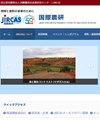The Role of Single Oral Dose of Excess Vitamin A and/or Vitamin E in Improving Ovarian Function Three Days Post-parturition in Primiparous Dairy Cows
IF 0.5
4区 农林科学
Q4 AGRICULTURE, MULTIDISCIPLINARY
引用次数: 0
Abstract
Dairy farmers dose their cows continuously with high amount of fat-soluble vitamin supplements to improve reproductive capacity and milk quality. However, these amounts are sometimes detrimental to the health of cows. Farmers require effective methods of vitamin supplementation methods without side effects. Our study aims to ascertain the effects of a single, high-concentration oral dose of vitamin A and E supplements on the reproductive performance of dairy cows. The cows were classified based on when did their first ovulation occur: within the first three weeks postpartum (early responder: ER) or after three weeks postpartum (late responder). This is based on the notion that the first postpartum ovulation is a useful indicator of reproductive function recovery in cows. We tested whether supplementation with vitamin A, E, or both effectively induced ovulation during the early postpartum period. Three out of the eight primiparous cows that were not administered a vitamin supplement and were considered ER. All six primiparous cows that were administered a single supplement mixture containing vitamins A (20,000,000 IU) and E (2,000 mg) three days postpartum were ERs. Additionally, all primiparous cows supplied either vitamin A (n = 4) or E (n = 4) alone were also ERs. All primiparous cows treated with even half the amount of vitamins A and E used in Experiment 1 (10,000,000 IU and 1,000 mg, respectively) were designated ERs. These results strongly suggest that even a single dose of excess vitamin A and E (whether administered jointly or separately) can improve ovarian function in dairy cattle during the early postpartum period.单次口服过量维生素A和/或维生素E对初产奶牛产后3 d卵巢功能的改善作用
奶农持续给奶牛喂食大量脂溶性维生素补充剂,以提高其繁殖能力和牛奶品质。然而,这些量有时对奶牛的健康有害。农民需要有效的维生素补充方法,没有副作用的方法。本研究旨在确定单次、高浓度口服维生素a和E补充剂对奶牛繁殖性能的影响。根据奶牛首次排卵的时间进行分类:产后前三周内(早期反应者:ER)或产后三周后(晚期反应者)。这是基于产后第一次排卵是奶牛生殖功能恢复的有用指标的概念。我们测试了在产后早期补充维生素A、E或两者是否有效地诱导排卵。8头未服用维生素补充剂的初产奶牛中有3头被认为是ER。产后3天给予含有维生素a(2000万IU)和维生素E (2000 mg)的单一补充混合物的6头初产奶牛均为急诊。此外,所有单独提供维生素A (n = 4)或维生素E (n = 4)的初产奶牛也发生了er。试验1中维生素A和维生素E用量(分别为1000万IU和1000 mg)为一半的所有初产奶牛均被指定为泌乳期。这些结果强烈表明,即使是单剂量的过量维生素a和E(无论是联合给药还是单独给药)也可以改善产后早期奶牛的卵巢功能。
本文章由计算机程序翻译,如有差异,请以英文原文为准。
求助全文
约1分钟内获得全文
求助全文
来源期刊
CiteScore
1.00
自引率
25.00%
发文量
42
审稿时长
>36 weeks
期刊介绍:
The Japan Agricultural Research Quarterly (JARQ) is a publication of the Japan International Research Center for Agricultural Sciences (JIRCAS), which provides readers overseas with the latest information on key achievements and developments in agricultural research in Japan, with the expectation that this information would contribute to the agricultural development of countries in tropical and subtropical regions.

 求助内容:
求助内容: 应助结果提醒方式:
应助结果提醒方式:


